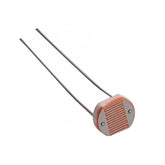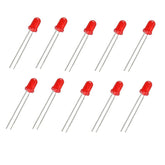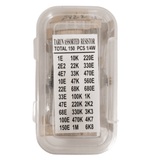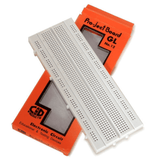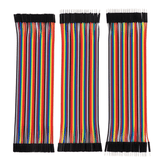Smart Street Lighting System using LDR Sensors and Arduino
Summary
Discover the Future of Illumination: Our latest blog delves into the fascinating world of Smart Street Lighting Systems powered by LDR Sensors and Arduino. Join us as we introduce Light Dependent Resistor (LDR) sensors, unveil the core essence of our innovative project, delve into essential components, explore the intricate connections required for this cutting-edge system, share the code that brings it all to life, and finally, reveal the remarkable achievements and exciting future prospects. Don't miss our captivating journey through the future of lighting technology! Read on to learn more about this enlightening project and its endless possibilities
Introduction LDR Sensors

In the ever evolving landscape of technology, Light Dependent Resistors (LDRs) have emerged as pivotal components, dynamically adjusting electrical resistance in response to changing light levels. This innovative technology finds its application in our Smart Street Lighting System, where LDR sensors play a crucial role in orchestrating adaptive illumination.
What exactly is a Light Sensor? Find out now!
read more : How LDR Sensor Works
Unveiling the Project Essence
At its core, the Smart Street Lighting System embodies a vision of efficiency and intelligence in urban infrastructure. By harnessing the synergy between LDR sensors and Arduino microcontrollers, the project endeavours to revolutionize energy consumption in street lighting.
The primary objective extends beyond nocturnal visibility, aiming to curtail unnecessary energy usage during daylight hours through a responsive and adaptive lighting solution. The project seems to be a complicated one but it’s making is simple, allowing us to save energy and utilize all the advantages it provides along with enjoying such revolutionary system at ease.
Also, read our blog Uses of LDR .
Essential Components
Embarking on this journey towards intelligent illumination necessitates the assembly of specific components:
- Arduino Microcontroller (e.g., Arduino Uno): Serving as the project's neural hub, the Arduino processes sensor data and commands the output.
- LDR Sensors: The perceptive eyes of the system, detecting shifts in ambient light levels.
- LEDs: These serve as the digital counterparts of streetlights, adjusting brightness according to signals from the Arduino.
- Resistors: Essential for managing current flow and safeguarding the integrity of components.
- Breadboard and Jumper Wires: Providing the structural framework for component connection.
- Power Supply: Breathing life into the entire system.
read more : What is the LDR Sensor?
Connections required:

Initiating the project involves a meticulous process of circuit creation. Here's a simplified guide:
- Connecting LDRs to Analog Input Pins: LDRs establish a connection with analog input pins on the Arduino, allowing for precise measurement of their resistance corresponding to light levels.
- Linking LEDs to Digital Output Pins: LEDs, the system's virtual streetlights, align with digital output pins on the Arduino through resistors. This alignment ensures a seamless response to signals from the microcontroller.
- Establishing Power and Ground Connections: Stability in power and ground connections for all components, including LDRs and LEDs, is pivotal for seamless functionality.
- Ensuring Component Harmony: Organizing and securing components on the breadboard guarantees an efficient and clean layout.
read more : What is a Light Sensor? - Types, Uses, Arduino Guide
Code:
The intelligence driving the Smart Street Lighting System lies in the program. Here's a simplified Arduino program and its breakdown:
#include
int sensorPin = A3; // input for ldr
int sensorValue = 0; // variable to store sensor values
int led = 3;
void setup() {
pinMode(led, OUTPUT);
Serial.begin(9600); }
void loop()
{
sensorValue = analogRead(sensorPin);
Serial.println(sensorValue);
if (sensorValue < 100)
{
Serial.println("LED light on");
digitalWrite(led,HIGH);
delay(1000);
}
digitalWrite(led,LOW);
delay(sensorValue);
}
Program explanation:
- Analog readings of LDRs are obtained through `analogRead(ldrPin)`, facilitating precise assessment of ambient light levels.
- The program compares these light values to a predefined threshold (500 in this case) to ascertain darkness or light.
- If the ambient light level is below the threshold, signalling darkness, the LED illuminates; otherwise, it remains off.
- The delay at the end of the loop introduces a temporal buffer, preventing rapid and unnecessary adjustments.
Read our blog on LDR Sensor detailing what is LDR, the working principle of LDR, Variations in resistance to change in light intensity, types, advantages, disadvantages, and applications of LDR sensors.
Unveiling Achievements and Future Prospects:
With the successful implementation of the Smart Street Lighting System comes a host of benefits—reduced energy consumption and heightened nighttime visibility. However, this marks not the culmination but the inception of possibilities. The roadmap unfolds:
1. IoT Integration
Connecting the system to the Internet of Things (IoT) unlocks a realm of possibilities. Remote monitoring and control become viable, empowering city administrators and maintenance personnel to manage lighting infrastructure efficiently.
2. Advanced Algorithms
The integration of machine learning algorithms promises heightened optimization. By analyzing historical data, traffic patterns, and weather conditions, the system could dynamically adjust brightness levels, fostering superior energy efficiency and safety.
3. Energy Storage Solutions
Integrating energy storage solutions, such as batteries or capacitors, addresses the challenge of energy wastage during daylight hours. Excess energy generated can be stored for use during the night, ensuring a sustained and sustainable power supply.
4. Sensor Fusion
The augmentation of the system through sensor fusion involves incorporating additional sensors, such as motion sensors. This real time integration allows the system to adjust lighting levels dynamically, enhancing both safety and energy efficiency.
Know more about How does a Light Dependent Resistor function?
read more : Smart Security System
Conclusion
In conclusion, the confluence of LDR sensors and Arduino in the Smart Street Lighting System exemplifies the transformative potential of technology. Beyond functionality, the system represents a shift towards intelligent, adaptive, and sustainable urban infrastructure.
As we cast our gaze into the future, the trajectory is clear—a future where smart systems seamlessly integrate into the fabric of our cities, responding dynamically to the needs of the environment and its inhabitants. The journey from the current iteration of the Smart Street Lighting System to its envisioned future involves continuous innovation, collaboration, and a commitment to building cities that are not only smarter but also more resilient and responsive to the evolving demands of our modern world.
If you appreciate our work don't forget to share this post and leave your opinion in the comment box.
Please do check out other blog posts about Popular electronics
Make sure you check out our wide range of products and collections (we offer some exciting deals!)





